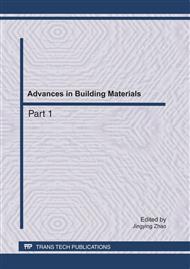p.1630
p.1635
p.1640
p.1645
p.1650
p.1655
p.1660
p.1665
p.1669
Experimental Study on Dewatering Dredged Clay with Ventilating Vacuum Method
Abstract:
A series of model tests were performed on dredged clay with high initial water contents for investigating the dewatering behavior by ventilating vacuum method (VVM). The results shows that the surface water separated from dredged clay can be quickly removed by VVM in which a new pattern PVD is used. In addition, the method also speeds up the deposition of dredged clay. The volume of dredged clay with an initial water content of 4.5 times liquid limit decreases by 50 percent within two months. This paper also investigated the spatial distribution law of water content by TDR method. It is found that the drainage distance of PVD is about 0.3-0.4m.
Info:
Periodical:
Pages:
1650-1654
Citation:
Online since:
May 2011
Authors:
Price:
Сopyright:
© 2011 Trans Tech Publications Ltd. All Rights Reserved
Share:
Citation:


